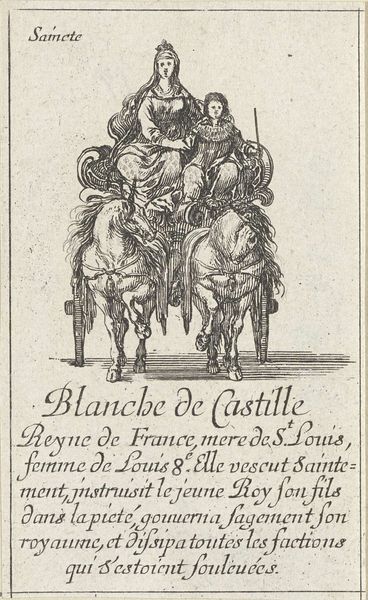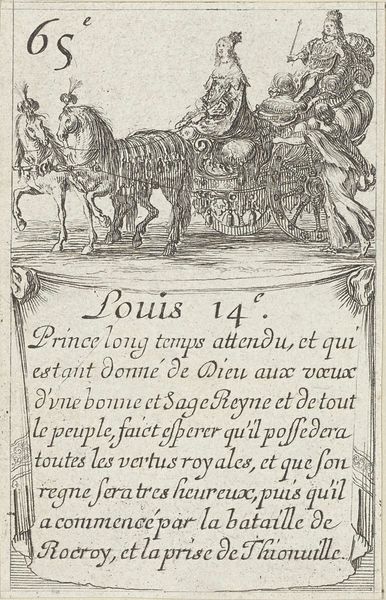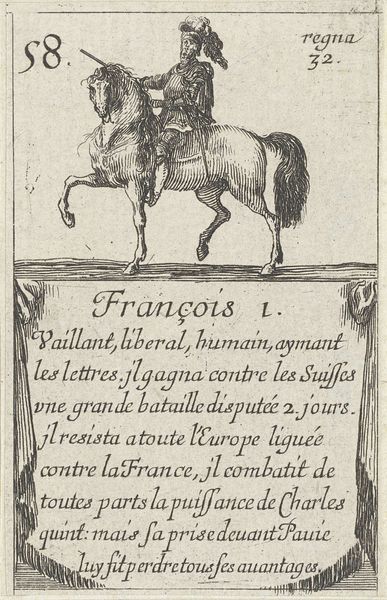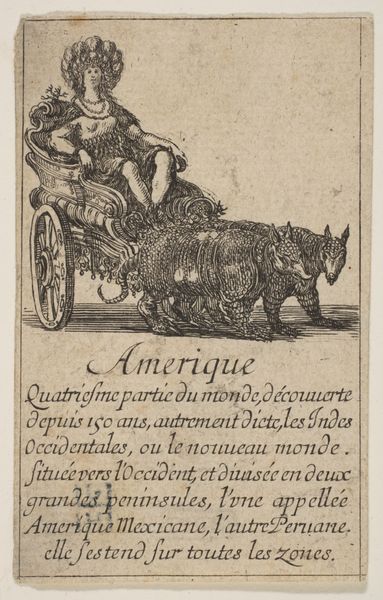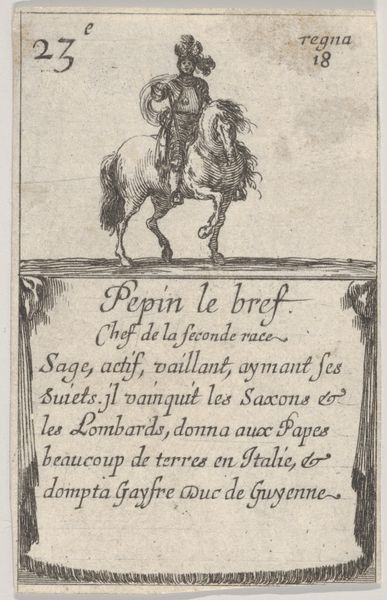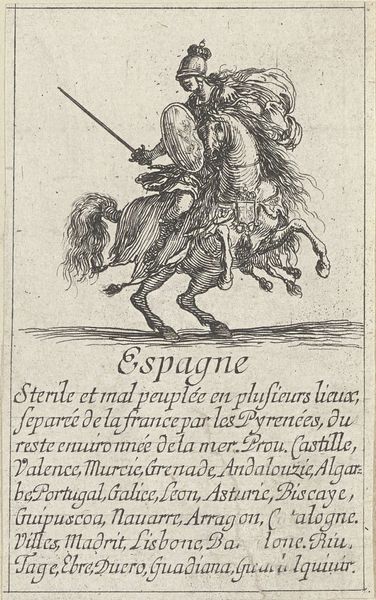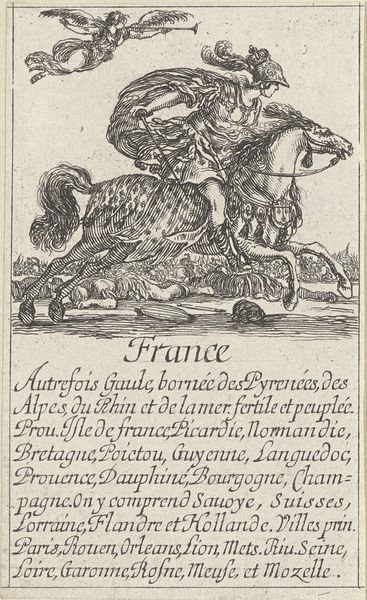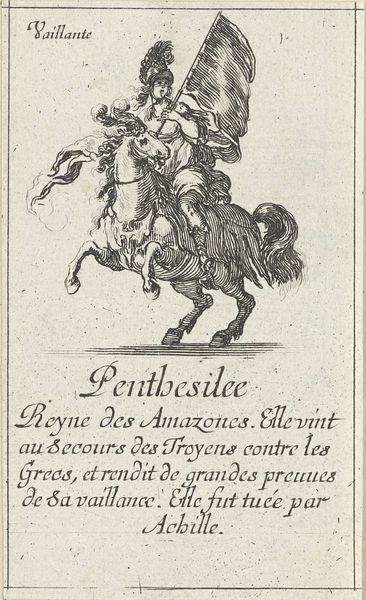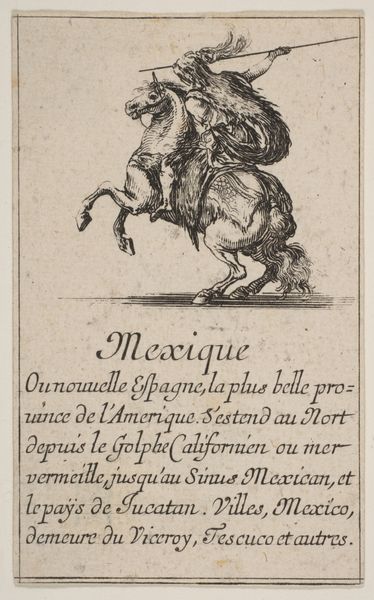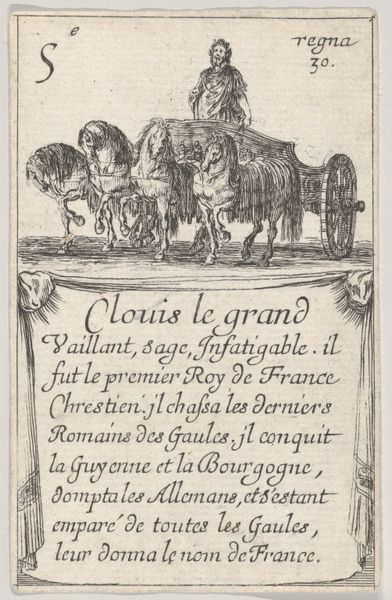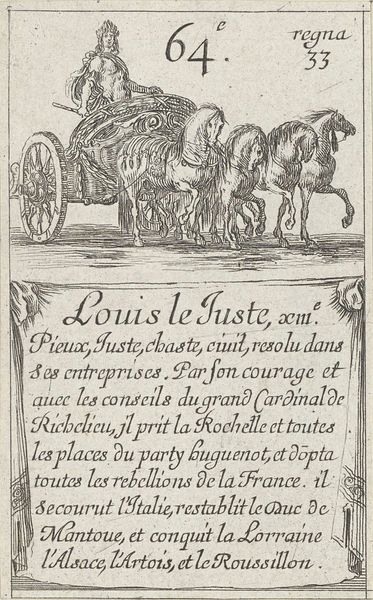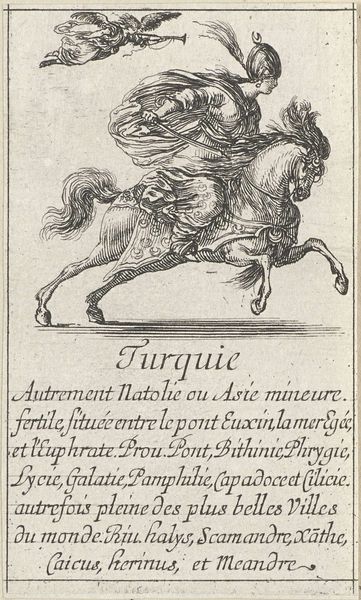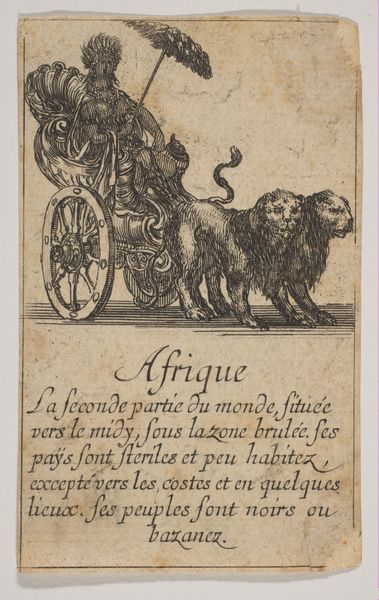
print, engraving
#
baroque
# print
#
figuration
#
history-painting
#
engraving
Dimensions: height 90 mm, width 55 mm
Copyright: Rijks Museum: Open Domain
Editor: So, this engraving is called "Baudour," and it was made by Stefano della Bella sometime between 1620 and 1664. The details are so intricate, especially the way he's rendered the horses and their ornamentation. What's your take on it? Curator: From a materialist perspective, what grabs me is the printmaking process itself. Engraving demanded immense skill and labor. The artist painstakingly etched lines into a copper plate, which was then inked and pressed onto paper. Consider the socio-economic context: Who had access to these prints? They circulated among a specific class, shaping their understanding of history and power. Editor: That's interesting. I hadn't really thought about the engraving itself as a kind of commodity. Curator: Precisely! The choice of depicting Baudour is also significant. She's shown as "Saincte," yet the inscription details her capture as a slave. This juxtaposition raises questions. Who commissioned this print, and what message were they trying to convey about royalty, servitude, and piety? Notice how her adornment seems luxurious yet constrained – what does it say about control? Editor: So, by focusing on the materials and the production, we can actually understand the social and political implications embedded in the artwork itself? It moves beyond just aesthetics. Curator: Exactly. And further, let’s consider paper’s historical value as a means of dispersing propaganda at that time. What do you think? Editor: This definitely gives me a whole new lens for appreciating art. Thanks. Curator: Indeed, considering material realities transforms our understanding. It helps to challenge high and low art and traditional artistic boundaries, enriching and re-imagining conventional discourse.
Comments
No comments
Be the first to comment and join the conversation on the ultimate creative platform.
